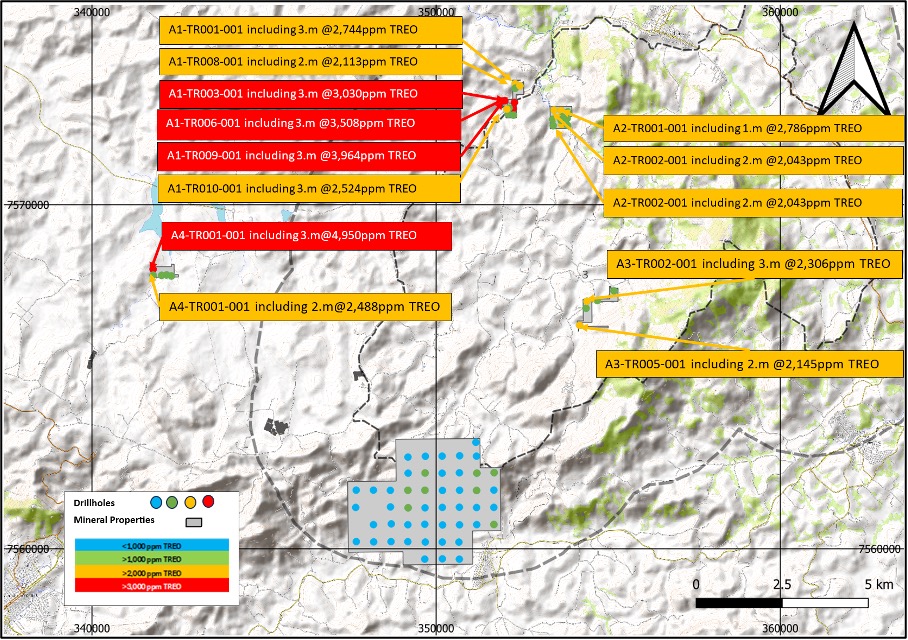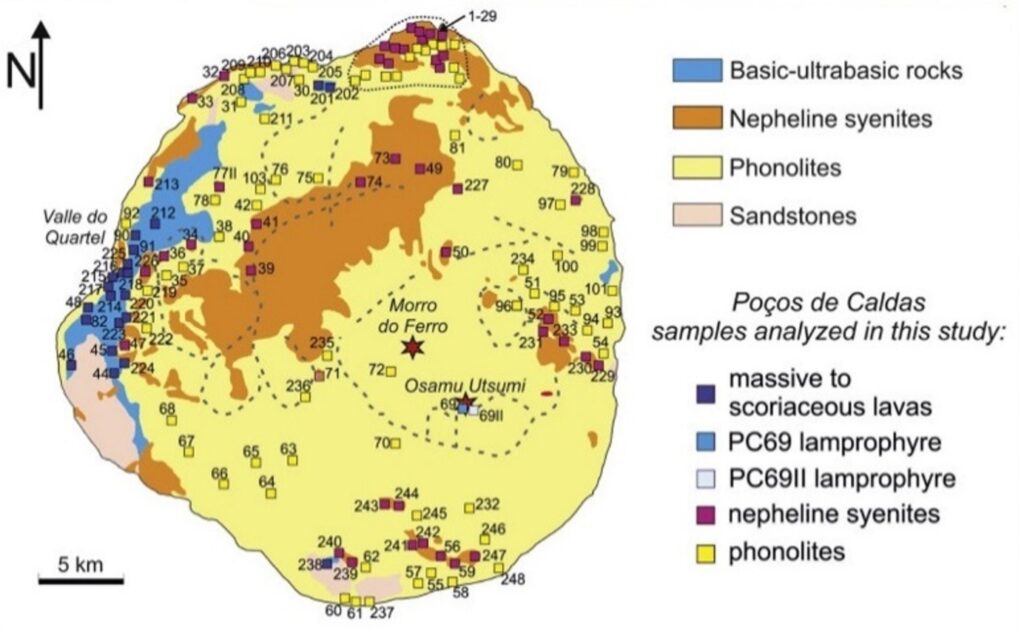Poços De Caldas | Minas Gerais, Brazil
Poços Rare Earth Project
Unlocking Brazil’s Rare Earth Potential
Enova’s Poços Project is strategically positioned within and adjacent to the renowned Poços de Caldas Alkaline Complex in southern Minas Gerais, one of the largest and most geologically significant alkaline igneous systems in the Southern Hemisphere. Globally recognised for its fertility in rare earth elements (REE) and other strategic minerals, this region offers a compelling setting for scalable, low-impact exploration.
Early exploration at Enova’s Poços Project has confirmed widespread development of saprolite clays across the tenement package, reinforcing the project’s potential for ionic adsorption clay (IAC)-style rare earth mineralisation. Initial fieldwork has successfully mapped geological structures and assessed geochemical signatures, laying the groundwork for targeted advancement.
Located in a mining-friendly jurisdiction with year-round access and established infrastructure, Poços is strategically positioned within Brazil’s rapidly emerging rare earth corridor. As part of Enova’s broader critical minerals portfolio, the project represents a high-value pipeline asset with scale, regional significance, and strong alignment with global demand for magnet metals.
With systematic exploration underway, including further sampling, drilling, and metallurgical testing, Poços is well-placed to move through key development milestones and attract strategic investment.
Geology
The late Cretaceous isolated circular structure, referred to as the Poços de Caldas Alkaline Complex massif, represents the second-largest known alkaline igneous occurrence worldwide, extending over an area of more than 800 square kilometres in southeastern Brazil. At Poços de Caldas, lateritic and allitic weathering of phonolites and nepheline syenites with magmatic hydrothermal REE enrichments further elevated metal concentrations. In most cases, weathering breaks down REE minerals, which may then be dispersed into the subsurface strata, adsorbed in their ionic form onto mineral surfaces, especially clays. The latter process can generate Ionic Adsorption Clay (IAC) deposits from which the REEs are relatively easily recovered (Alkaline-Silicate REE-HFSE Systems, Charles D. Beard et al.).
Processing
The Ionic Adsorption Clay (IAC) metallurgy of the Poços de Caldas REE deposit showcases a highly efficient and low-cost method for extracting rare earth elements (REEs). The deposit benefits from intense chemical weathering that has liberated REEs from their host mineral (bastnäsite) into an ionically adsorbed form within saprolite clays. This allows for a simple ammonium sulphate wash to recover a high-value mixed rare earth carbonate, bypassing the need for complex crushing, grinding, or high-temperature processing typical of hard rock REE deposits. The IAC mineralisation is near surface, enabling easy access without drilling or blasting, and the land can be rehabilitated post-extraction with minimal environmental impact. These factors contribute to significantly lower CAPEX, OPEX, and technical risk, positioning Poços de Caldas as one of the most economically attractive REE sources globally.
Significant Intercepts
- Enova confirms significant assay results for a non-invasive shallow subsurface auger sampling programme at Poços; highlights of these are results greater than 2,000 ppm TREO[1] are as follows:
- A1-TR001-001 including 3m @2,744
- A1-TR003-001 including 3m @3,030
- A1-TR006-001 including 3m @3,508
- A1-TR008-001 including 2m @2,113
- A1-TR009-001 including 3m @3,964
- A1-TR010-001 including 3m @2,524
- A2-TR001-001 including 1m @2,786
- A2-TR002-001 including 2m @2,043
- A2-TR006-001 including 2m @2,099
- A3-TR002-001 including 3m @2,306
- A3-TR005-001 including 2m @2,145
- A4-TR001-001 including 2m @2,488
- A4-TR001-001 including 3m @4,950
- Peak rare earth element (REE) assays were 5,158 ppm TREO or 52% TREO, 5,042 ppm TREO or 0.50% TREO, 4,650 ppm TREO or 0.47% TREO, providing guidance for a high-grade exploration target at Poços.
- REE enriched tenements at Poços confirm the areas’ potential for a prospect-scale, high-grade REE deposit.
[1] TREO=CeO2+Dy2O3+Er2O3+Eu2O3+Gd2O3+Ho2O3+La2O3+Lu2O3+Nd2O3+Pr6O11+Sm2O3+Tb4O7+Tm2O3+Y2O3+Yb2O3 based on greater than 2,000 ppm TREO cut-off.

Auger sampling locations for the Poços Project, showing >2,000 ppm TREO significant intercepts
Poços De Caldas Alkaline Complex

Poços De Caldas Alkaline Complex


